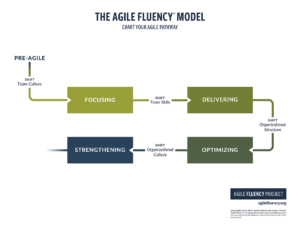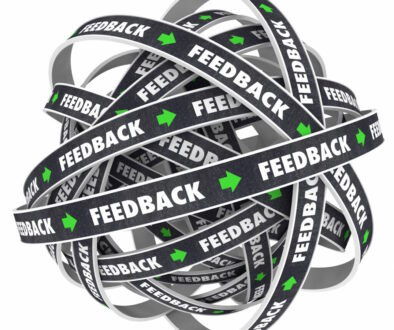One of my favorite models for corporate agility is the Agile Fluency® Model. In this model, there are four different destinations a corporate might land in.
The details are important here. It is not four levels of maturity to go through. While it is true that to get to some destinations you will have to go through others, they are not levels.
Most models present levels of Agile maturity, highlighting a common path from beginner to expert. The implication is that all organizations should strive for expert-level agile implementations. Often these models are coupled with specific methodologies that will get an organization from one level to the next.
James Shore and Diana Larsen felt something was off with this model. Over multiple years they collaborated with many other practitioners and leaders in the agile community as they tried to define a better way. One of the core pieces I love about the model they eventually described is the idea that not every organization should strive to have a fully agile system implemented expertly.
On the surface, the model is fairly simple.  With no Agile practices, a team is not yet on the chart. As a team brings in more practices and gains fluency they move closer to one of the destinations.
With no Agile practices, a team is not yet on the chart. As a team brings in more practices and gains fluency they move closer to one of the destinations.
This is where the magic in this model happens. A team will move toward a specific destination, a destination that makes sense for them and the organization. One which the organization can commit to helping them achieve. They are not under pressure to make it to some expert end state, they are allowed to excel as experts at the proper level of agility for them, and the company.
Of course, some methodologies are mentioned when an evaluation is done, but they are not set in stone action steps. Those come after discovering where the organization wants the team and where the team is. The methodologies are used as stepping stones to achieve fluency, not as an end goal.
If you are ready to discover where your organization really needs teams to be, contact me for an initial conversation. I will talk with you about what the model can and cannot do for you. We will get a chance to see if we are a good fit for each other, and the end result can be a chance to help your teams deliver more value to your customers, and do it faster and better.
 There is nothing inherently wrong with a square peg. They have merely been vilified by the industry of round holes we find ourselves in. If you have a square-shaped hole in your organization you need a square peg.
There is nothing inherently wrong with a square peg. They have merely been vilified by the industry of round holes we find ourselves in. If you have a square-shaped hole in your organization you need a square peg.





